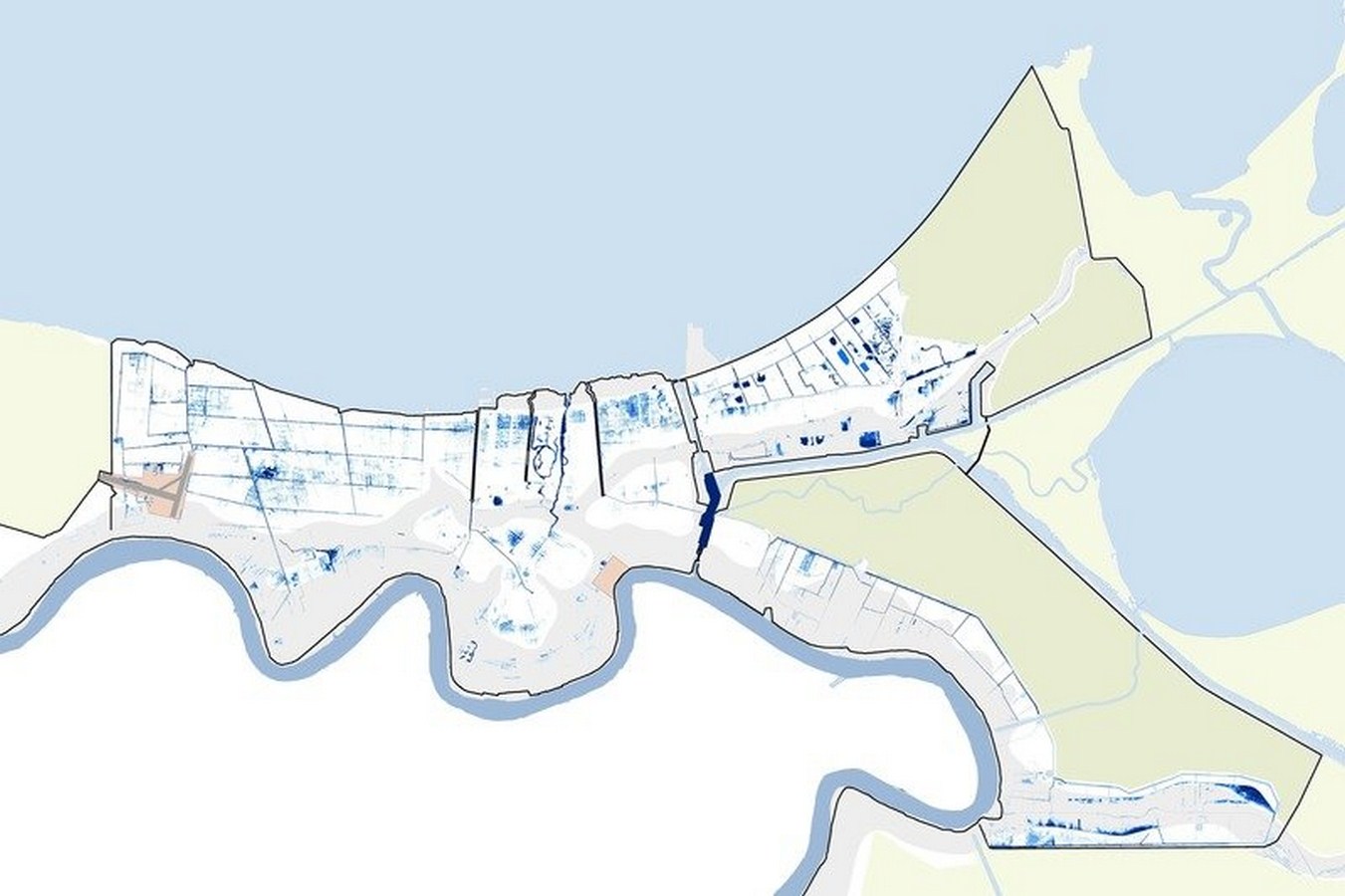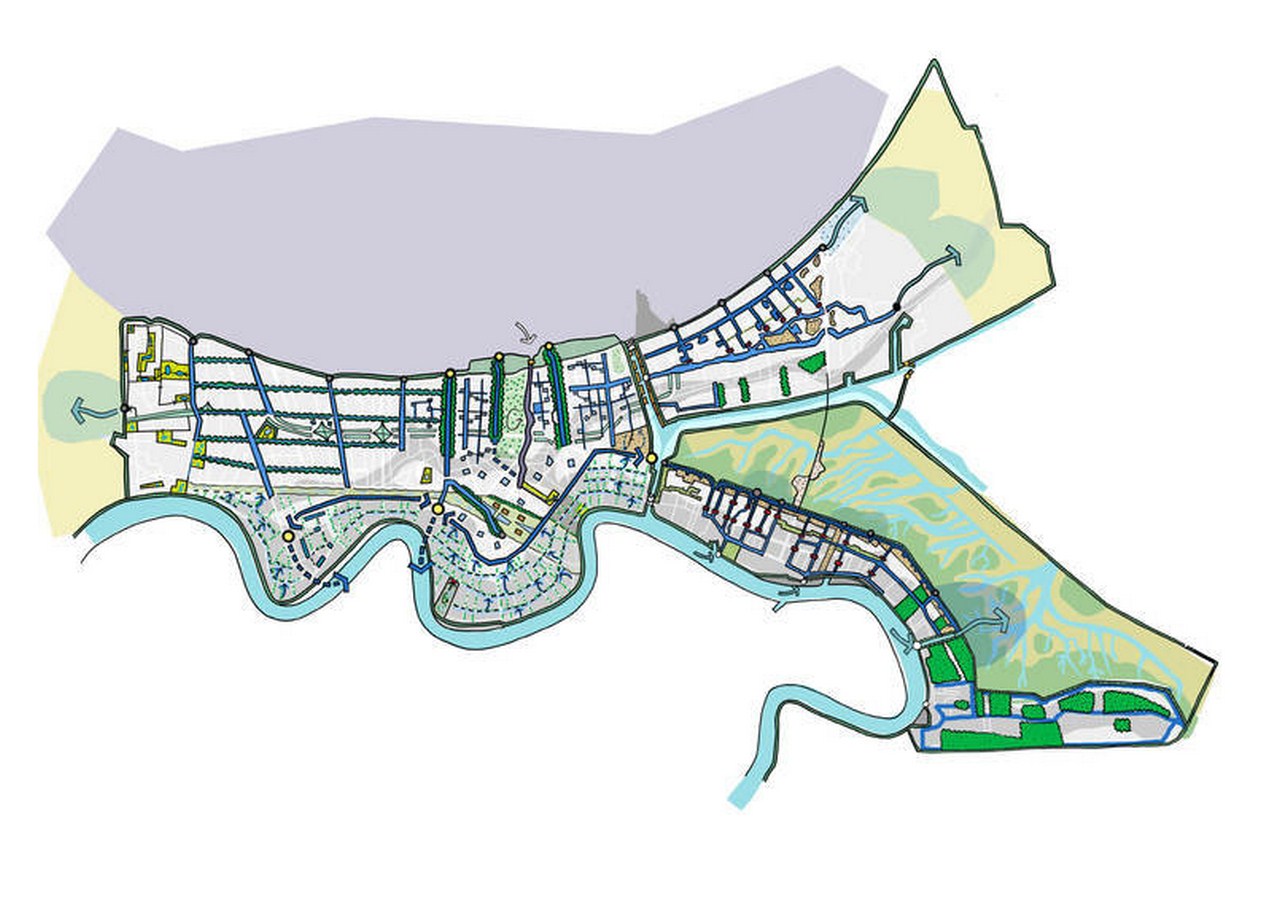Problems and Goals: With sixty inches of rain each year and the growing risk of climate change, Greater New Orleans’ 20th century paradigm toward water is sorely inadequate. The current approach, removing stormwater as quickly as possible, results in sinking land, broken infrastructure, and fails to protect homes and businesses from flooding. Over the next 50 years, the cost of flooding and subsidence to the community is estimated to be $10.2 Billion. Furthermore, failing to think about water holistically results in the separation of communities, devaluation of land, and disposal of valuable resources, creating an intangible cost from reduced quality of life. The goal of the Greater New Orleans Urban Water Plan (UWP) is to reinstate water as the region’s lifeblood and, in Katrina’s wake, bring about a new water era beyond recovery and toward long-term resiliency and prosperity
Architect: David Waggonner
Team Members: ARCADIS, CDM Smith, Eustis Engineering, GCR, Nelson Engineers, Royal Haskoning, Dewberry, Sherwood Design Engineers, Dana Brown & Associates, FutureProof, H+N+S Landscape Architects, Robert de Koning Lanscape Architect, Deltares, Bosch Slabbers Landscape Architects, City of Amsterdam, City of Rotterdam, Tulane University, Technical Delft University, LSU Coastal Sustainability Studio, Manning Architects, Palmbout Urban Landscapes, Bright Moments
Country: United States

Design Achievement: To live with water in Greater New Orleans demands a reconceptualization of the function of existing canals, roads, neutral grounds, vacant lots, and parks. In this sense, the project is a renovation of the existing urban fabric, utilizing an intense understanding of history to adapt our city for the future. The plan is unprecedented in its scope for a US urban area and it is our hope that innovations forged here in engineering, planning, and design will be a prototype for other coastal regions where robust water infrastructure is critical to economic prosperity, ecological health, and survival.

Project Size: The UWP covers a three-basin project area of approximately 225 square miles including 70 square miles of protected wetlands. The plan proposes two levels of implementation: the basic level comprises urban design interventions that can be completed most easily within the current economic and political framework at a cost of $2.9 Billion. Full implementation of the UWP is estimated at $6.2 Billion over the next 50 years, with an estimated economic benefit of $22.3 Billion.

Implementation: The first phase, from 2013-2020 begins with retrofits of projects already underway and community outreach. The second phase, from 2020-2030, establishes improved water flows and both public and private pilot projects. The third and final phase, from 2030-2065, concludes with formalized policy for water management, continued implementation, and broad water literacy throughout the community.

Process and Team: The UWP team of local and international water management and climate adaptation experts was first cultivated during the Dutch Dialogues workshops and continued methodologies perfected during that project. The UWP process included design and planning workshops, technical workshops on topics such as financing, geomorphology and subsidence, extensive outreach, and meetings with systems managers and an advisory council. Today, community engagement continues through an evolving website, planning documents, iPad app, and multiple forms of face-to-face engagement such as an organization which works with teachers to integrate urban water issues into school curricula.
More information on the scope of the Greater New Orleans Urban Water Plan is available at www.gnouwp.com. The name of our firm has been removed on this website for RTF review.
In
Urban Design
Greater New Orleans Urban Water Plan | Waggonner & Ball Architects with Team Members
3 Mins Read





